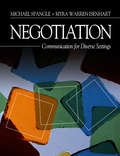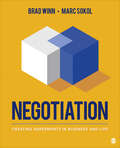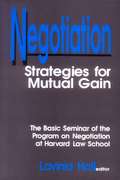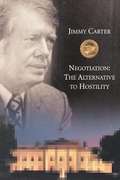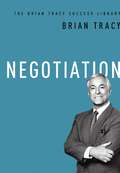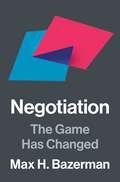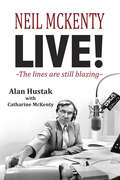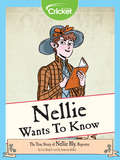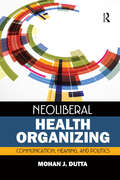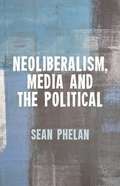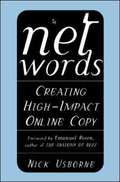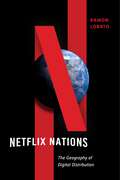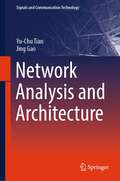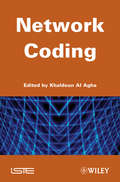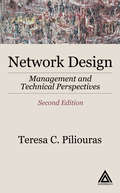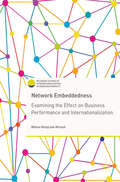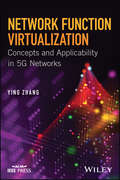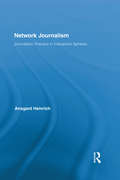- Table View
- List View
Negotiation for Procurement Professionals: A Proven Approach that Puts the Buyer in Control
by Jonathan O'BrienHighly effective negotiation skills are an essential element of a purchasing professional's toolkit. Negotiation for Procurement Professionals provides a step-by-step approach to delivering winning negotiations and getting game changing results. It provides purchasers with the necessary tools and tactics for a detailed, planned approach to negotiation. Jonathan O'Brien shifts the emphasis away from relying mostly upon personality to a more structured approach that enables anyone to negotiate effectively, even when up against a formidable opponent. This approach allows the purchasing professional or the buying team to evaluate the supplier in advance, assess the sales team, and tailor their negotiation strategy depending on cultural differences, personality traits and game theory. Negotiation for Procurement Professionals provides a strong framework for discussion in advance of the meeting, allowing the negotiator to plan their agenda, objectives and tactics. The book is based upon Red Sheet Methodology, a proven and collaborative technique used by many companies globally. If you are in a buying role, this book will increase your confidence and transform your ability to secure winning outcomes and better business results. Negotiation for Procurement Professionals is the perfect companion to Jonathan O'Brien's other books Category Management in Purchasing and Supplier Relationship Management. Used together, they provide a complete and powerful strategic purchasing toolkit.
Negotiation for Procurement and Supply Chain Professionals: A Proven Approach for Negotiations with Suppliers
by Jonathan O'BrienHighly effective negotiation skills are an essential element of a purchasing and supply chain professional's toolkit. Negotiation for Procurement and Supply Chain Professionals provides a step-by-step approach to delivering winning negotiations and getting game-changing results. It provides purchasers and supply chain managers with the necessary tools and tactics for a detailed, planned approach to negotiation. Negotiation for Procurement and Supply Chain Professionals allows the purchasing professional or the buying team to evaluate the supplier in advance, assess the sales team, and tailor their negotiation strategy depending on concession strategies, cultural influences and game theory. Negotiation for Procurement and Supply Chain Professionals provides a strong framework for discussion in advance of the meeting, allowing the negotiator to plan their agenda, objectives and tactics. Based upon the Red Sheet® Methodology, this book is a proven and collaborative technique used by many companies globally. The new edition includes supply chain planning, updates on multi-party negotiation for supply chain negotiations, Brexit as a retrospective example of negotiation and how the negotiation capability will need to change in the future.
Negotiation for Purchasing Professionals
by Jonathan O'BrienBased upon the author's proven Red Sheet methodology, Negotiation for Purchasing Professionals provides a step-by-step approach to delivering winning negotiations and getting game changing results. The author shifts the emphasis away from relying mostly upon personality and tactics used during the negotiation, to a more structured and planned approach that enables anyone to negotiate effectively, even when up against a formidable opponent. This approach allows the purchasing professional or team to evaluate the supplier in advance, assess the sales team, and tailor their negotiation strategy depending on cultural differences, personality traits and game theory. It creates a strong framework for discussion in advance of the meeting, allowing the negotiator to plan their agenda, objectives and tactics.If you are in a buying role, this book will increase your confidence and transform your ability to secure winning outcomes for business results.
Negotiation: Communication for Diverse Settings
by Dr Michael L. Spangle Dr Myra Warren IsenhartNegotiation is not formulaic. How we negotiate is determined largely by the context in which the negotiation process takes place. Negotiation: Communication for Diverse Settings provides the reader with a comprehensive overview of the negotiation process as it applies to a wide variety of contexts. Skillfully weaving practitioner interviews and real world examples throughout the book, Michael Spangle and Myra Warren Isenhart emphasize the day-to-day relevance of negotiation skill. The authors provide knowledge vital to successful negotiation in a variety of situations, including interpersonal relations, the workplace, shopping and other consumer settings, community relations, and international affairs. Discussions of the moral and ethical dilemmas of negotiation-as well as the detail provided in various sections, such as international negotiations will undoubtedly prove useful to novice and seasoned negotiators alike.
Negotiation: Creating Agreements in Business and Life
by Brad Winn Marc SokolNegotiation is much more than making a deal; it′s a life skill. Negotiation: Creating Agreements in Business and Life explores the theory and practice of negotiation while unpacking how to develop the head, heart, hand, and stomach of a successful negotiator. Authors Brad Winn and Marc Sokol frame negotiation as a dynamic, creative process that can produce lasting positive results for all parties involved. Practical applications, role-play exercises, and cases provide students with ample opportunities to sharpen their negotiation skills to become confident, capable negotiators in the workplace and in everyday life. Included with this title: LMS Cartridge: Import this title’s instructor resources into your school’s learning management system (LMS) and save time. Don’t use an LMS? You can still access all of the same online resources for this title via the password-protected Instructor Resource Site.
Negotiation: Creating Agreements in Business and Life
by Brad Winn Marc SokolNegotiation is much more than making a deal; it′s a life skill. Negotiation: Creating Agreements in Business and Life explores the theory and practice of negotiation while unpacking how to develop the head, heart, hand, and stomach of a successful negotiator. Authors Brad Winn and Marc Sokol frame negotiation as a dynamic, creative process that can produce lasting positive results for all parties involved. Practical applications, role-play exercises, and cases provide students with ample opportunities to sharpen their negotiation skills to become confident, capable negotiators in the workplace and in everyday life. Included with this title: LMS Cartridge: Import this title’s instructor resources into your school’s learning management system (LMS) and save time. Don’t use an LMS? You can still access all of the same online resources for this title via the password-protected Instructor Resource Site.
Negotiation: Strategies for Mutual Gain
by Dr Lavinia HallWith contributions from top scholars in the field of negotiation, this clear and entertaining volume effectively blends technique with theory to present frameworks for effective negotiating, analyses of person-to-person negotiating situations and applications in organizational settings. Building on the concept that conflict, when managed well, can provide the impetus for growth, constructive change and mutual benefit, the book is dedicated to breaking the paradigm of winning and losing and transforming negotiation into a search for improved solutions to problems.
Negotiation: The Alternative to Hostility
by Jimmy CarterThis first address of the Carl Vinson Memorial Lecture Series at Mercer University is a masterful assessment of the difficulties of resolving disputes. President Carter's guidelines for establishing a more stable peace in the world are concise and imaginative without sacrificing their essential practicality.
Negotiation: The Brian Tracy Success Library (The\brian Tracy Success Library)
by Brian TracyNegotiation is an essential element of almost all of our interactions--personally and professionally. It's part of how we establish relationships, work together, and arrive at solutions for our clients, our organizations, and ourselves. Simply put, those who don't negotiate well risk falling victim to those who do. Throughout his career, success expert Brian Tracy has negotiated millions of dollars worth of contracts. Now, with this concise guide, you too can become a master negotiator and learn how to: * Utilize the six key negotiating styles * Harness the power of emotion in hammering out agreements * Use time to your advantage * Prepare like a pro and enter any negotiation from a position of strength *Gain clarity on areas of agreement and disagreement * Develop win-win outcomes * Use the power of reciprocity * Know when and how to walk away * Apply the Law of Four * Plus much more Smart negotiation can save you time and money, make you more effective, and contribute substantially to your career. Jam-packed with Brian Tracy's trademark wisdom, this practical and portable book puts the power of negotiation right in your hands.
Negotiation: The Game Has Changed
by Max H. BazermanFrom the world&’s leading expert on negotiation, an essential guide to negotiating in any situation—whether over Zoom, across political and cultural divides, or during a supply chain crisisThe world has changed dramatically in just the past few years—and so has the game of negotiation. COVID-19, Zoom, political polarization, the online economy, increasing economic globalization, and greater workplace diversity—all have transformed the who, what, where, and how of negotiation. Today, traditional negotiating tactics, while still effective, need to be tailored to vastly different situations and circumstances. In Negotiation: The Game Has Changed, legendary Harvard Business School professor Max Bazerman, a pioneer in the field of negotiation, shows you how to negotiate successfully today by adapting proven negotiation principles and strategies to the challenging new contexts you face—from negotiating across cultural and political differences to trying to reach an agreement over Zoom or during a supply chain crisis.Negotiation offers a groundbreaking new way of thinking about the importance of the unique context of any negotiation—and when and how it should influence how you negotiate. At the same time, the book provides a concise and expert overview of essential negotiating techniques for anyone new to the subject or who wants a refresher. The result is a must-read—a powerful toolkit for successfully negotiating in a world where the game of negotiation has changed.
Neil McKenty Live: The lines are still blazing
by Catharine Mckenty Alan HustakNeil McKenty liked to argue just for the hell of it. During the 1970's and 80s he was one of Montreal's highest rated radio talk show hosts. At the peak of his career more than 75,000 people tuned in to CJAD to hear his show, Exchange. 'The basic exchange on Exchange, is not between the listeners and Neil McKenty," he once explained. "It is between the listeners. If the host sets up the chemistry, the show goes on its own momentum, and I am almost on the sidelines. On the other hand, I am in the entertainment business. If I bore my listeners, I'm dead." The material collected in this book focuses on the years he moderated, infuriated, provoked and entertained his listeners.
Nellie Wants to Know: The True Story of Nellie Bly, Reporter
by Liz HuyckDuring an era when women had few freedoms, there was one woman who spoke up for them. She was known as Nellie Bly, a pioneering female investigative reporter of her time. Well known for her record-breaking trip around the globe, her contributions also exposed corruption in a local hospital.
Neoliberal Health Organizing: Communication, Meaning, and Politics (Critical Cultural Studies in Global Health Communication #2)
by Mohan J DuttaMohan J Dutta closely interrogates the communicative forms and practices that have been central to the establishment of neoliberal governance. In particular, he examines cultural discourses of health in relationship to the market and the health implications of these cultural discourses. Using examples from around the world, he explores the roles of public-private partnerships, NGOs, militaries, and new technologies in reinforcing the link between market and health. Identifying the taken-for-granted assumptions that constitute the foundations of global neoliberal organizing, he offers an alternative strategy for a grassroots-driven participatory form of global organizing of health. This inventive theoretical volume speaks to those in critical communication, in health research, in social policy, and in contemporary political economy studies.
Neoliberalism, Media and the Political
by Sean PhelanNeoliberalism, Media and the Political examines the condition of media and journalism in neoliberal cultures. Emphasizing neoliberalism's status as a political ideology that is simultaneously hostile to politics, the book presents a critical theoretical argument supported by empirical illustrations from New Zealand, Ireland, the UK and the US.
Net Words: Creating High-Impact Online Copy
by Nick UsborneA practical guide on how to write online text that is funny, personal, engaging, and informative-in short, how to write text that people actually want to read. It gives insight on how to attract customers by online communication.
Netflix Nations: The Geography of Digital Distribution (Critical Cultural Communication #28)
by Ramon LobatoHow streaming services and internet distribution have transformed global television culture.Television, once a broadcast medium, now also travels through our telephone lines, fiber optic cables, and wireless networks. It is delivered to viewers via apps, screens large and small, and media players of all kinds. In this unfamiliar environment, new global giants of television distribution are emerging—including Netflix, the world’s largest subscription video-on-demand service.Combining media industry analysis with cultural theory, Ramon Lobato explores the political and policy tensions at the heart of the digital distribution revolution, tracing their longer history through our evolving understanding of media globalization. Netflix Nations considers the ways that subscription video-on-demand services, but most of all Netflix, have irrevocably changed the circulation of media content. It tells the story of how a global video portal interacts with national audiences, markets, and institutions, and what this means for how we understand global media in the internet age.Netflix Nations addresses a fundamental tension in the digital media landscape – the clash between the internet’s capacity for global distribution and the territorial nature of media trade, taste, and regulation. The book also explores the failures and frictions of video-on-demand as experienced by audiences. The actual experience of using video platforms is full of subtle reminders of market boundaries and exclusions: platforms are geo-blocked for out-of-region users (“this video is not available in your region”); catalogs shrink and expand from country to country; prices appear in different currencies; and subtitles and captions are not available in local languages. These conditions offer rich insight for understanding the actual geographies of digital media distribution. Contrary to popular belief, the story of Netflix is not just an American one. From Argentina to Australia, Netflix’s ascension from a Silicon Valley start-up to an international television service has transformed media consumption on a global scale. Netflix Nations will help readers make sense of a complex, ever-shifting streaming media environment.
Netflixed
by Gina KeatingThe history of Netflix is a long struggle for greatness marked by multiple disasters, lucky breaks, personal betrayal, and broken hearts. It has more drama than most of the movies Netflix rents. Netflix has come a long way since 1997, when two Silicon Valley entrepreneurs, Marc Randolph and Reed Hastings, decided to start an online DVD store before most people owned a DVD player. They were surprised and elated when launch-day traffic in April 1998 crashed their server and resulted in 150 sales. Today, Netflix has more than 25 million subscribers and annual revenues above $3 billion. Yet long- term success—or even survival—is still far from guaranteed. Journalist Gina Keating recounts the absorbing, fast-paced drama of the company’s turbulent rise to the top and its attempt to invent two new kinds of business. First it engaged in a grueling war against video-store behemoth Blockbuster, transforming movie rental forever. Then it jumped into an even bigger battle for online video streaming against Google, Hulu, Amazon, and the big cable companies. Netflix ushered in such innovations as DVD rental by mail, a patented online queue of upcoming rentals, and a recommendation algorithm called Cinematch that proved crucial in its struggle against bigger rivals. Yet for all its success, Netflix is still a polarizing company. Hastings is often heralded as a visionary—he was named Business Person of the Year in 2010 by Fortune—even as he has been called the nation’s worst CEO. Netflix also faces disgruntled customers after price increases and other stumbles that could tarnish the brand forever. The quest to become the world’s portal for premium video on demand will determine nothing less than the future of entertainment and the Internet. Drawing on extensive new interviews and her years covering Netflix as a financial and entertainment reporter, Keating makes this tale as absorbing as it is important. .
Netflixed
by Gina KeatingNetflix has come a long way since 1997, when two Silicon Valley entrepreneurs, Marc Randolph and Reed Hastings, decided to start an online DVD store before most people owned a DVD player. They were surprised and elated when launch-day traffic in April 1998 crashed their server and resulted in 150 sales. Today, Netflix has more than 25 million subscribers and annual revenues above $3 billion. Yet long- term success-or even survival-is still far from guaranteed. Journalist Gina Keating recounts the absorbing, fast-paced drama of the company's turbulent rise to the top and its attempt to invent two new kinds of business. First it engaged in a grueling war against video-store behemoth Blockbuster, transforming movie rental forever. Then it jumped into an even bigger battle for online video streaming against Google, Hulu, Amazon, and the big cable companies. Netflix ushered in such innovations as DVD rental by mail, a patented online queue of upcoming rentals, and a recommendation algorithm called Cinematch that proved crucial in its struggle against bigger rivals. Yet for all its success, Netflix is still a polarizing company. Hastings is often heralded as a visionary-he was named Business Person of the Year in 2010 by Fortune-even as he has been called the nation's worst CEO. Netflix also faces disgruntled customers after price increases and other stumbles that could tarnish the brand forever. The quest to become the world's portal for premium video on demand will determine nothing less than the future of entertainment and the Internet. Drawing on extensive new interviews and her years covering Netflix as a financial and entertainment reporter, Keating makes this tale as absorbing as it is important.
Netflixed: The Epic Battle for America's Eyeballs
by Gina KeatingNetflix has come a long way since 1997, when two Silicon Valley entrepreneurs, Marc Randolph and Reed Hastings, decided to start an online DVD store before most people owned a DVD player. They were surprised and elated when launch-day traffic in April 1998 crashed their server and resulted in 150 sales. Today, Netflix has more than 25 million subscribers and annual revenues above $3 billion. Yet long- term success-or even survival-is still far from guaranteed. Journalist Gina Keating recounts the absorbing, fast-paced drama of the company's turbulent rise to the top and its attempt to invent two new kinds of business. First it engaged in a grueling war against video-store behemoth Blockbuster, transforming movie rental forever. Then it jumped into an even bigger battle for online video streaming against Google, Hulu, Amazon, and the big cable companies. Netflix ushered in such innovations as DVD rental by mail, a patented online queue of upcoming rentals, and a recommendation algorithm called Cinematch that proved crucial in its struggle against bigger rivals. Yet for all its success, Netflix is still a polarizing company. Hastings is often heralded as a visionary-he was named Business Person of the Year in 2010 by Fortune-even as he has been called the nation's worst CEO. Netflix also faces disgruntled customers after price increases and other stumbles that could tarnish the brand forever. The quest to become the world's portal for premium video on demand will determine nothing less than the future of entertainment and the Internet. Drawing on extensive new interviews and her years covering Netflix as a financial and entertainment reporter, Keating makes this tale as absorbing as it is important.
Network Analysis and Architecture (Signals and Communication Technology)
by Jing Gao Yu-Chu TianThis book covers network analysis and architecture for large-scale computer network planning. Networks and the Internet are essential for modern industries and societies. Building a new network, upgrading an existing network, or planning to use a public network requires integrating various network mechanisms and technologies in a cohesive fashion. This demands a deep understanding of the concepts, principles, processes, approaches, and good practices of advanced network planning. More specifically, emphasizing service-based networking, the book introduces structured processes for network planning, provides systematic approaches for network analysis and architecture, develops network planning specifications, and discusses high-level network architectural models from various perspectives. It also offers detailed discussions on component-based architecture about addressing, routing, performance, management, and security and privacy. Recent developments in data centers, virtualization, and cloud are also embedded into the network architecture. Moreover, the book includes a comprehensive introduction to building practical TCP/IP network communications via sockets with practical examples. The book is suitable for use as a textbook for senior undergraduate and postgraduate students or as a reference book for network practitioners looking to develop or enhance their skills in network planning.
Network Coding
by Khaldoun Al AghaNetwork coding, a relatively new area of research, has evolved from the theoretical level to become a tool used to optimize the performance of communication networks – wired, cellular, ad hoc, etc. The idea consists of mixing “packets” of data together when routing them from source to destination. Since network coding increases the network performance, it becomes a tool to enhance the existing protocols and algorithms in a network or for applications such as peer-to-peer and TCP. This book delivers an understanding of network coding and provides a set of studies showing the improvements in security, capacity and performance of fixed and mobile networks. This is increasingly topical as industry is increasingly becoming more reliant upon and applying network coding in multiple applications. Many cases where network coding is used in routing, physical layer, security, flooding, error correction, optimization and relaying are given – all of which are key areas of interest. Network Coding is the ideal resource for university students studying coding, and researchers and practitioners in sectors of all industries where digital communication and its application needs to be correctly understood and implemented. Contents 1. Network Coding: From Theory to Practice, Youghourta Benfattoum, Steven Martin and Khaldoun Al Agha. 2. Fountain Codes and Network Coding for WSNs, Anya Apavatjrut, Claire Goursaud, Katia Jaffrès-Runser and Jean-Marie Gorce. 3. Switched Code for Ad Hoc Networks: Optimizing the Diffusion by Using Network Coding, Nour Kadi and Khaldoun Al Agha. 4. Security by Network Coding, Katia Jaffrès-Runser and Cédric Lauradoux. 5. Security for Network Coding, Marine Minier, Yuanyuan Zhang and Wassim Znaïdi. 6. Random Network Coding and Matroids, Maximilien Gadouleau. 7. Joint Network-Channel Coding for the Semi-Orthogonal MARC: Theoretical Bounds and Practical Design, Atoosa Hatefi, Antoine O. Berthet and Raphael Visoz. 8. Robust Network Coding, Lana Iwaza, Marco Di Renzo and Michel Kieffer. 9. Flow Models and Optimization for Network Coding, Eric Gourdin and Jeremiah Edwards.
Network Design: Management and Technical Perspectives
by Teresa C. PiliourasThere are hundreds of technologies and protocols used in telecommunications. They run the full gamut from application level to physical level. It is overwhelming to try to keep track of them. Network Design, Second Edition: Management and Technical Perspectives is a broad survey of the major technologies and networking protocols and how they interr
Network Embeddedness
by Milena Ratajczak-MrozekThis book systematizes the concepts of business relationships and network embeddedness, taking a new approach to internationalization, relevant for the global economy. It reflects the growing importance of network internationalization theory and explores the impact of embeddedness in domestic and foreign relationships on a company's performance. The author questions the validity of the distinction between domestic and foreign activity of companies and demonstrates that in the B2B market, there are actually no exclusively domestic companies which are not directly or indirectly connected with foreign entities. Chapters cover both small to medium sized enterprises and large multinational corporations, presenting a qualitative analysis of over 400 companies including case studies from the IT and furniture industries. This informative study will provide useful insight for academics and students of business and management, international business and organization studies.
Network Function Virtualization: Concepts And Applicability In 5g Networks (Wiley - Ieee Ser.)
by Ying ZhangA horizontal view of newly emerged technologies in the field of network function virtualization (NFV), introducing the open source implementation efforts that bring NFV from design to reality This book explores the newly emerged technique of network function virtualization (NFV) through use cases, architecture, and challenges, as well as standardization and open source implementations. It is the first systematic source of information about cloud technologies' usage in the cellular network, covering the interplay of different technologies, the discussion of different design choices, and its impact on our future cellular network. Network Function Virtualization: Concepts and Applicability in 5G Networks reviews new technologies that enable NFV, such as Software Defined Networks (SDN), network virtualization, and cloud computing. It also provides an in-depth investigation of the most advanced open source initiatives in this area, including OPNFV, Openstack, and Opendaylight. Finally, this book goes beyond literature review and industry survey by describing advanced research topics such as service chaining, VNF orchestrations, and network verification of NFV systems. In addition, this resource: Introduces network function virtualization (NFV) from both industrial and academic perspectives Describes NFV's usage in mobile core networks, which is the essence of 5G implementation Offers readers a deep dive on NFV's enabling techniques such as SDN, virtualization, and cloud computing Network Function Virtualization: Concepts and Applicability in 5G Networks is an ideal book for researchers and university students who want to keep up with the ever-changing world of network function virtualization.
Network Journalism: Journalistic Practice in Interactive Spheres (Routledge Research in Journalism)
by Ansgard HeinrichDrawing on current theoretical debates in journalism studies, and grounded in empirical research, Heinrich here analyzes the interplay between journalistic practice and processes of globalization and digitalization. She argues that a new kind of journalism is emerging, characterized by an increasingly global flow of news as well as a growing number of news deliverers. Within this transformed news sphere the roles of journalistic outlets change. They become nodes, arranged in a dense net of information gatherers, producers, and disseminators. The interactive connections among these news providers constitute what Heinrich calls the sphere of "network journalism."



